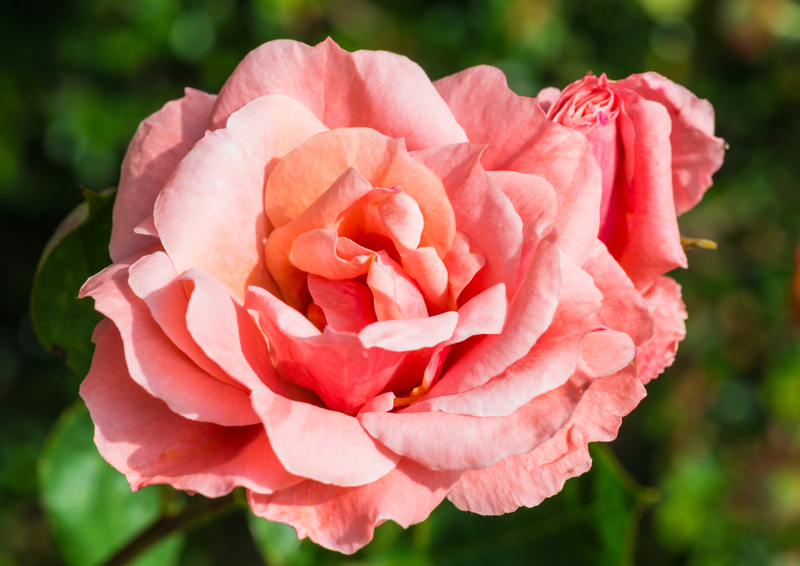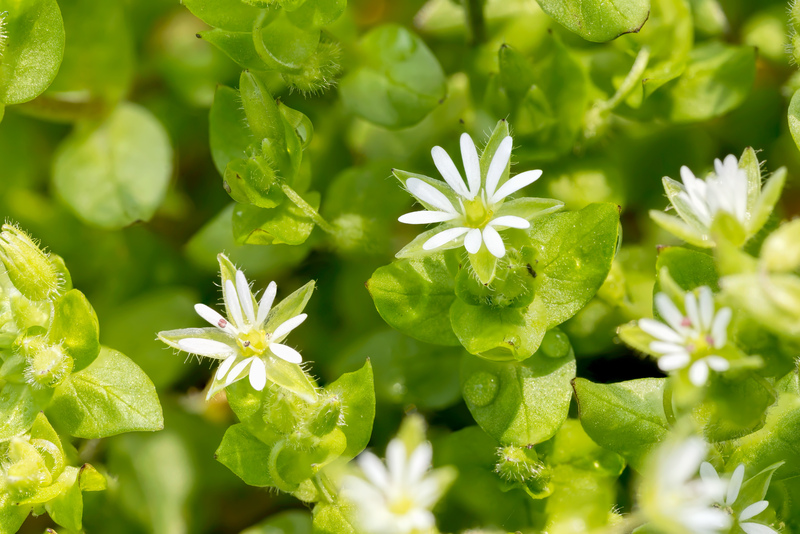Crafting Your Lush Herb Oasis
Posted on 18/06/2025
Crafting Your Lush Herb Oasis
If you've ever dreamed of stepping outside to harvest fresh basil for your pasta, snipping fragrant mint for a summer drink, or adding just-cut rosemary to roasted vegetables, then crafting your lush herb oasis should be at the top of your gardening goals. Whether you have sprawling backyard space or just a sunny windowsill, creating an abundant, thriving herb garden is both rewarding and possible for everyone. This comprehensive guide will walk you through everything you need to know, from planning and design to care and harvesting, ensuring your herb haven flourishes year-round.
Why Grow Your Own Herb Oasis?
There are myriad reasons for crafting your lush herb sanctuary. Not only do homegrown herbs burst with flavors far superior to store-bought counterparts, but they also offer remarkable health benefits, support pollinators, and add beauty and fragrance to your living spaces. Additionally, cultivating your own herb oasis can be therapeutic, connecting you to the rhythms of nature and encouraging a sustainable lifestyle.
- Superior Flavor: Freshly cut herbs elevate any meal.
- Health Benefits: Many herbs contain potent antioxidants and vitamins.
- Cost Savings: Growing your own reduces the need for store-bought herbs, many of which wilt quickly.
- Aesthetic Appeal: Lush greenery enhances your home and garden atmosphere.
- Wildlife Support: Herb blossoms draw pollinators, beneficial insects, and birds.

Planning Your Herb Garden Paradise
Successful herb oasis design starts with thoughtful planning. Whether you dream of raised beds filled with diverse herbs or clever container arrangements for a compact balcony, consider these important factors:
1. Location, Location, Location!
Herbs generally thrive in full sunlight, requiring at least six hours of direct sun per day. Survey your available spaces--windowsills, patios, balconies, or garden beds--before deciding where to site your oasis.
- South-facing windowsills are ideal for indoor herb gardens.
- Outdoor raised beds or containers provide excellent drainage and easy access.
- Vertical gardens or green walls maximize small spaces and add greenery to patios and balconies.
2. Selecting the Perfect Herbs
The diversity of herbs available for your lush oasis is astonishing. Consider your cooking preferences, climate, and available space when choosing varieties. Some popular and easy-to-grow options include:
- Basil: Perfect for Italian dishes and pestos.
- Mint: Great for teas, desserts, and cocktails--contains many varieties like spearmint and peppermint.
- Parsley: Fresh, bright flavor for a wide range of cuisines.
- Rosemary: Hardy and aromatic, wonderful for roasting and grilling.
- Thyme: Versatile and low-maintenance, perfect for savory dishes.
- Chives: Delicate onion flavor, great for garnishing.
- Cilantro: Essential for Mexican and Asian dishes (note: prefers cooler temperatures).
- Dill: A must-have for pickling and seafood.
- Sage, oregano, tarragon, and lemongrass: Add variety and flavor diversity.
Tip: Start with a few easy-to-grow herbs and expand as your confidence grows. Mixing annuals and perennials provides harvests throughout the year.
3. Designing Your Herb Oasis
Consider both function and form when crafting your lush herb oasis. Good design ensures healthy growth, easy access, and aesthetic value. Here are some design principles to guide you:
- Height & Light: Place taller or upright herbs (like rosemary and sage) at the back or in the center; lower-growing herbs (like thyme or basil) in front or at the edges.
- Spacing: Provide sufficient space between plants for airflow and growth--overcrowding can lead to disease and stunted growth.
- Accessibility: Arrange herbs you use most often along the edges or near walkways for easy harvesting.
- Companion Planting: Some herbs help each other thrive--basil and tomatoes, for instance, make excellent neighbors.
- Visual Appeal: Mix leaf shapes, colors, and flower types for a visually lush effect.
Establishing Your Herb Heaven
Soil Matters
Herbs perform best in well-draining, nutrient-rich soil. Amend garden beds or containers with organic compost to provide a solid foundation for robust growth. Avoid heavy, dense soils, which can lead to root rot.
- Use a quality potting mix for containers, enriched with compost or worm castings.
- Add perlite or sand to improve drainage if your soil is heavy.
- Mulch lightly to regulate moisture and suppress weeds.
Planting: Seeds vs. Seedlings
You can begin your herbal oasis from seeds or purchase young plants from nurseries (seedlings). Seeds are more economical and provide variety, but seedlings offer a head start. Here's how to decide:
- Seeds: Ideal for annuals like basil, cilantro, and dill. Start indoors in early spring or sow directly outdoors after frost.
- Seedlings: Great for perennials like rosemary, thyme, and sage, or if you want immediate results.
Watering Wisdom
Herbs are generally low-maintenance, but their water needs vary:
- Most herbs prefer moderate, steady moisture--not soggy soil. Water deeply when the top inch of soil feels dry.
- Thirsty herbs (like basil and parsley) need more regular watering, especially in containers.
- Drought-tolerant herbs (like rosemary, thyme, and oregano) require less frequent watering, especially once established.
Feeding Your Herbs
Many herbs thrive in lean conditions, but occasional feeding encourages lush, continuous growth. Use a balanced, organic fertilizer or diluted fish emulsion every 4-6 weeks during the growing season. Avoid over-fertilizing, which can make herbs leggy or reduce essential oil concentration (and thus, flavor).
Maintaining a Flourishing Herb Sanctuary
Harvesting for Health & Abundance
Harvesting is where the joy of your lush herb oasis comes to life. Regular harvesting encourages bushier plants and richer yields--don't hesitate to snip often!
- Basil, mint, and parsley: Pinch or cut just above a pair of healthy leaves.
- Woody herbs (like rosemary and thyme): Take sprigs from the top, being careful not to cut into old, brown wood.
- Avoid overharvesting: Never remove more than one-third of the plant at a time.
Tip: Harvest early in the day, after dew dries but before the sun is strong, for peak flavor and aroma.
Pruning for Perfection
Regular pruning prevents herbs from flowering too early (bolting), encourages fuller growth, and conserves flavor. Remove flower buds from annual herbs (like basil and cilantro) to prolong productivity. For perennials, trim lightly after harvesting to maintain tidy, healthy plants.
Pest Management and Organic Care
Herbs are surprisingly resistant to many common pests, but some issues may arise:
- Aphids and spider mites: Spray with a jet of water or insecticidal soap.
- Slugs and snails: Use natural deterrents like crushed eggshells or copper strips around containers.
- Healthy soil and good airflow naturally deter most diseases and infections.
Always prioritize organic and environmentally friendly controls to keep your herb oasis healthy and chemical-free.
Expanding Your Herb Haven: Creative Ideas
Herb Spiral Gardens
An herb spiral is a vertical, spiraling mound that creates microclimates for different herbs--sun-loving rosemary at the top, thirsty parsley near the bottom. Spirals conserve space and add architectural flair to your garden. Use rocks, bricks, or reclaimed materials to build your spiral oasis.
Container Herb Gardens
No yard? No problem! Container gardening lets you cultivate your lush herb oasis on balconies, patios, and even kitchen countertops. Choose pots with adequate drainage holes and group herbs with similar water and sunlight requirements together. Some popular combinations include:
- Mediterranean herbs: Rosemary, thyme, oregano, and sage
- Mild, moist favorites: Basil, parsley, cilantro, and chives
- Mint varieties: Mint spreads aggressively--dedicate a container just for it!
Hanging and Vertical Gardens
Maximize limited space and add decor by crafting vertical herb gardens using wall planters, pocket containers, or recycled pallets. Herbs like thyme, oregano, and creeping varieties cascade beautifully and are easily accessible for cooking.
Year-Round Harvest: Season Extension Techniques
Keep your herb oasis abundant beyond summer with these techniques:
- Cold frames or mini-greenhouses: Protect tender herbs from frost and extend your harvest into autumn.
- Indoor windowsill gardens: Grow basil, parsley, cilantro, mint, and thyme indoors during the colder months.
- Drying and preserving: Harvest excess herbs to dry, freeze, or store in oil for enjoying your homegrown flavors year-round.
Eco-Friendly & Sustainable Practices in Your Herb Oasis
Make your herb garden a beacon of sustainability:
- Compost kitchen scraps and garden clippings to feed next season's plants.
- Collect rainwater in barrels to reduce water usage.
- Encourage beneficial insects (like ladybugs and bees) by planting some herbs, such as dill and fennel, that attract them.
- Use mulch from organic materials to suppress weeds and retain moisture.
- Rotate crops or move container herbs seasonally to discourage pests and diseases.

Inspiring Your Culinary Creations
With your lush herb oasis established, get creative in the kitchen! Fresh herbs can be used in every meal, from herbed omelets and salads to infused oils, teas, and homemade skincare products. Try new combinations to discover flavors that surprise and delight. For best results, pair robust herbs (like rosemary and sage) with heavier dishes, and delicate herbs (like basil and parsley) with lightly flavored foods.
Conclusion: Cultivate Your Lush Herb Oasis Today
Crafting your lush herb oasis is a journey as satisfying as any harvest. Through careful planning, creative design, and mindful care, anyone can create a sanctuary bursting with the sights, scents, and tastes of fresh herbs. Whether a sunlit kitchen sill or a sprawling summer spiral, your herb garden will reward you with beauty, sustainability, and flavor every day. Start today, nurture your plants, and enjoy the endless possibilities your homegrown herbs offer--you'll wonder how you ever cooked without them!
Ready to embark on your herbal journey? Gather your seeds and tools, choose your favorite varieties, and begin crafting your personal herb oasis--a lush retreat of abundance and joy, right at your fingertips.

